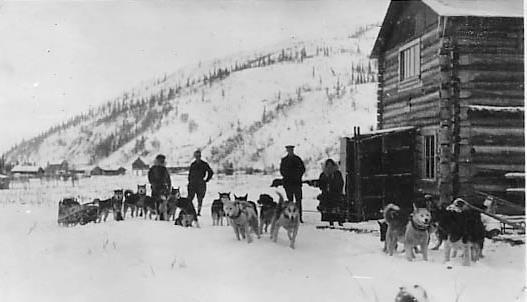Last updated: January 5, 2023
Article
Kantishna Roadhouse History
The Kantishna Roadhouse, located in what was once the downtown area of the gold mining town of Kantishna near the end of the Park Road, is the oldest standing building in Denali National Park and Preserve. The Kantishna Roadhouse represents the social history of Kantishna’s 1920s revival as a mining community and is one of the few intact buildings remaining from the historic mining era (1903–1942). In August 2018, the Roadhouse was placed on the National Register of Historic Places.
While the Kantishna region experienced a mining stampede in 1905–06, the region’s riches were not exhausted. Miners in larger numbers started returning to the Kantishna area in 1919 as a part of a substantial investment by Thomas Aitken in lode mining along Mineral Ridge (now known as Quigley Ridge). The lode claims were just north of the Roadhouse’s “downtown” Kantishna location, which was the hub of the Kantishna mining community. Many laborers came to Kantishna during this time to build the Kantishna dam and ditch as a part of a large hydraulic mining operation administered by James “Doc” Sutherland and the Kantishna Hydraulic Mining Company (KHMC).

James Gordon Steese Papers, Archives and Special Collections, Dickinson College, Carlisle, PA
The two-story log Roadhouse (near mile 91 of the Denali Park Road) was constructed by Kantishna Mining Commissioner C. Herbert Wilson circa 1920, prior to the construction of the Park Road. The building is historically significant for its connection to Kantishna’s mining history. Wilson originally constructed the building to serve as his residence, but almost immediately, Wilson began operating a post office out of the building while serving as Postmaster of the Kantishna District from 1919 to 1922.
In the 1920s and 1930s, the Roadhouse also served as the central community building in the area and informally accommodated travelers and visitors if they needed a place to rest. Many of the mining reports produced by the territorial government and federal government during the 1920s used the “Kantishna Post Office” as a reference point when explaining the distance between Roosevelt and Kantishna—two substantial settlements that catered to miners as they navigated to claims in the Kantishna Hills from Nenana or Fairbanks.

NPS/Erik Johnson, 2018
